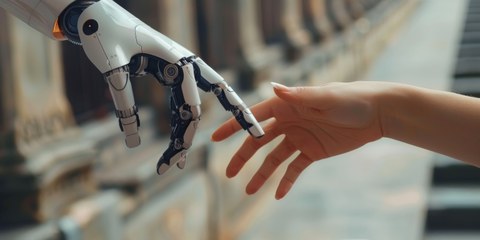May 23, 2025
Can you trust a robot?
Beyond our day to day interactions with Alexa, Siri and Rumba, humanoid robots are being designed for richer forms of social interaction (or should we say relationship?) with humans. We have tried to make them move, to speak and to show expressions in as human-like a fashion as possible. Ultimately, this is in the hope of making these robots be perceived as trustworthy. But the question we want to ask is: If engineering and computer science create the perfect humanoid robot, will this be enough to inspire people's trust? By definition, trust relies on a willingness to depend on another party to achieve goals that we would not be able to achieve alone. Importantly, we trust someone not only because of their functional abilities, but we also consider personal characteristics, such as honesty and benevolence. We can say that trust implies a state of vulnerability, in which I risk putting myself in the capable, caring hands of someone else.
Assuming the robot's hands are capable, can they also be caring? Care and compassion are based on empathy, which is the ability to put oneself in the other person's shoes and share their affective states. Empathy is like a mirror: it implies the possibility for both partners to feel what the other feels. So perhaps to trust a robot, and share one's vulnerability, we do not need a perfect robot, but that spark of uncertainty and vulnerability that animates people. Hence the question: can we give robots vulnerability? Can they be capable and vulnerable at the same time?
One of the most intimate channels for connecting with the other, sharing affective states, vulnerability and mutual trust is social touch: a static pressure or gentle stroking on the other's arm, hugs, hand-shakes, tickle, caresses. Here at CeTI (https://ceti.one/de/), Junior Professor Merle Fairhurst and her team investigate the power of this kind of touch (given, received, reciprocal) in communicating various meanings and emotions, to comfort or seek comfort, to share joy. We wonder whether this experience is also possible in human-robot interactions.
“To become a socially intelligent actor a robot must be able to sense, classify and interpret human touch and respond to this in an appropriate manner” says Dr. Merel Jung, who collaborates on the project from Tilburg University. But even if this were technically possible, how would it be experienced by people? Would it induce the human brain and physiological systems to react as for human-to-human touch or in a unique way?
Want to find out more? Watch this space for our research in the area of touch and trust.

